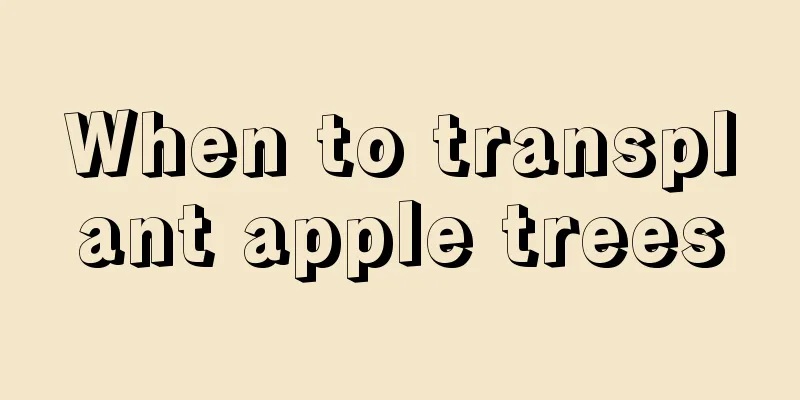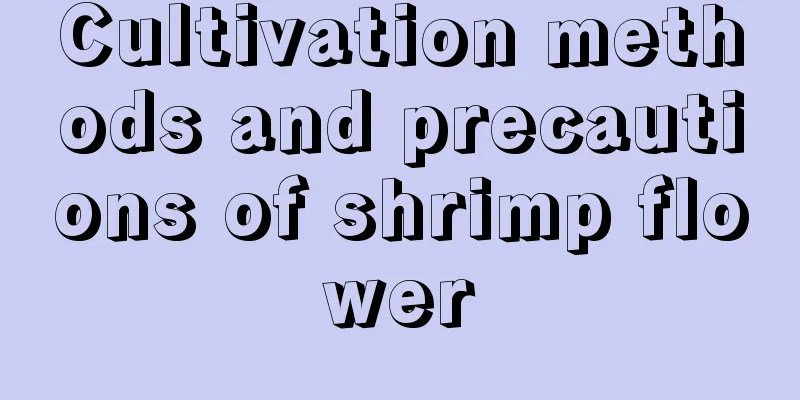Peanut planting and management technology Peanut high-yield cultivation technology and management methods

Sowing timeClimate conditions vary from place to place, so spring and summer sowing are generally adopted. Sowing starts in late March, and it is safer to sow in late April in places with low temperatures. Usually, the minimum temperature for peanut germination is 15℃ . If the temperature is lower than 15℃, the seeds will rot. Therefore, it is important to master the sowing period of peanuts in production, which is an important link to ensure uniform and strong seedlings of peanuts and obtain high yields of peanuts. Land preparationChoose loose, deep, sunny, neutral or slightly acidic soil for planting peanuts. Combined with land preparation, apply enough fertilizer for the peanuts throughout their life. In terms of base fertilizer application, apply 2,000 to 3,000 kg of soil and miscellaneous fertilizers and about 25 kg of phosphate fertilizer per mu. Seed drying + seed mixing + seed soaking① Seed sunning : Sunning peanut seeds in shell before sowing can enhance seed vitality and kill germs carried by seeds. Choose a sunny day and sun the seeds from 10 am to 4 pm every day for 1-3 days. ②Seed dressing : Before sowing, use 0.3% multi-bacteria to flexibly mix the seeds to prevent root rot and base rot. Using 150-200 grams of rhizobia per mu can accelerate the formation of nodules. ③ Seed soaking and germination : Soak the seeds in warm water at about 35 degrees for 2 to 4 hours. If germination is required, place the soaked seeds in a room at 25-30 degrees Celsius for germination. Planting depthThe depth of peanut sowing has a great influence on the emergence and vigor of peanut seedlings. If the sowing depth is too deep, the peanuts are easy to bud or form tall seedlings. If the sowing depth is too shallow, the seedlings will not grow vigorously in the case of little rain, and old and stiff seedlings will be formed. Generally, the sowing depth of peanuts is generally controlled at about 5 cm. After sowing the peanut seeds, cover them with 3 cm of fine soil . Do not cover them with large pieces of soil, otherwise they will easily become budded or even fail to germinate. top dressing① Topdressing during the seedling stage Depending on the degree of nitrogen deficiency and different peanut varieties, apply 5 to 15 kg of nitrogen fertilizer per mu, combined with clearing or tillage and weeding, and apply deep into the soil. Alternatively, apply 5,000 kg of human and animal manure to 2.5-5 kg of nitrogen fertilizer. Mix 15-20 kg of phosphate fertilizer and 50-70 kg of wood ash per mu, then apply deep into the soil layer after cultivating, weeding and trenching. ② Topdressing during flowering period The flowering period is when peanuts need a large amount of fertilizer. The method, type and amount of topdressing are similar to those during the seedling stage. ③ Middle and late topdressing If peanuts have poor growth in the early stage and are not topdressed with large amounts of fertilizer in time, in the middle and late stages, you can soak 1-1.5 kg of phosphate fertilizer per mu in 70-100 kg of clean water for one night, filter the residue and add 50-100 g of urea for foliar fertilization. You can also spray with a 1-2% urea solution. Cultivation and soil cultivationIn peanut cultivation, generally after the peanut seedlings have grown, the soil around the peanut seedlings must be separated to allow the cotyledon nodes to emerge from the ground. If the cotyledons of peanuts cannot emerge from the soil, the cotyledon nodes and the first pair of main fruiting branches cannot develop normally and will die in the soil over time, causing a significant reduction in peanut yields. Peanuts have the characteristics of blooming above ground and bearing fruit underground. Fruit needles must be in darkness and under certain mechanical stimulation conditions to develop into pods normally, so soil needs to be cultivated during the flowering and needle-setting periods of peanuts . |
<<: Peony planting methods and precautions Peony planting conditions and planting techniques
>>: When is the best season to plant roses? When is the best time to plant roses?
Recommend
How to propagate money tree by cuttings, and how long does it take for the cuttings to take root?
1. Cutting time The time for money tree cuttings ...
Can ginseng be grown in pots?
Can ginseng be grown in pots? Ginseng can be pott...
Does bougainvillea bloom in spring?
1. Whether it blooms Bougainvillea also blooms in...
Why is dahlia called Tianma flower?
1. Reasons First of all, dahlia is not Gastrodia ...
How many years does it take for almonds to bear fruit?
Almond , also known as almond, is a nut native to...
What to do if the roots of the jade lotus are rotten
Causes of root rot in Teyu lotus Excessive water:...
How to raise egg geese
Laying geese, that is, geese used for laying eggs...
What are the varieties of Chlorophytum?
1. Chlorophytum comosum In fact, it is not a spid...
Cultivation methods and precautions of creeping bellflowers How to grow creeping bellflowers
The lantern-like flowers with red calyx and yello...
When is the best time to plant noodles?
Noodle vegetables are a wild vegetable that has b...
How to propagate saffron
Bulb propagation Ball time The growing season of ...
Advantages and disadvantages of Diaochan rose
Diao Chan rose is also known as Westminster Cathe...
The steps of cuttings of the fortune tree and other propagation methods
1. Cutting steps 1. Time selection: The money tre...
Reasons why lilac does not bloom
1. Increase lighting 1. Reason: If the light dura...
How to cultivate perfume roses
Soil management Roses are not very demanding on s...









